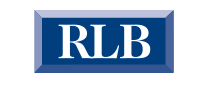New Developments – ERTC and PPP
By: William E. Bloss, CPA
With all that you’ve fought through over this past year, it’s time you get a little positive news thrown your way. But before I go too far just let me say…”We’re awaiting further guidance from the IRS.” There it is! I got it out of the way quickly this time. But know what I’m about to share with you has great potential to improve your cash flow. And we all know cash is king!
The Consolidated Appropriations Act, 2021 was signed into law by then President Trump on December 27, 2020. As part of that law, there was a change to the Employee Retention Tax Credit (ERTC). The change to the ERTC includes a retroactive change (to 2020), and an expansion (in the first two quarters of 2021). Keep in mind as you read this that as part of the Cares Act signed into law in 2020, it was an either/or proposition. If you took Paycheck Protection Program (PPP) money, it precluded you from taking advantage of the ERTC. Under this retroactive change, you effectively are now eligible for both. I want to emphasize one thing however. Early interpretations of the new Act suggest that if you have already filed for PPP forgiveness, you may not be able to take advantage of the credit in 2020. As a reminder, you have ten months from the end of your covered period to apply for forgiveness. We’re suggesting if you haven’t already done so, DO NOT apply for forgiveness just yet. Wait for that further guidance.
What is it?
The ERTC is a refundable payroll tax credit. For 2020 – the credit is equal to 50% of the qualified wages up to $10,000 per employee per year paid between March 12 and December 31, 2020. That’s right…potentially $5,000 per employee! For the first two quarters of 2021 – the credit is equal to 70% of the qualified wages per employee…per quarter. Per quarter! So if you pay that employee $10,000 in Q1 and $10,000 in Q2…that’s a $14,000 credit per employee! Can you feel it?
Who is eligible?
Essentially there are two eligibility requirements. Again, an either/or proposition. To be eligible for the credit in 2020, you either had to experience a 50% revenue decline compared to the same quarter in 2019, OR…suffered from a government mandated shutdown (partial shutdowns qualify). I only have friends in PA and NJ (not exactly true), and I know both States Governors shut them down for a time in 2020. My friends in the restaurant business continue to deal with partial shutdown restrictions.
To be eligible for the credit in 2021, you will need to experience a 20% reduction in gross receipts compared to the same quarter in 2019. That’s right, in 2019. If your Q1 2019 revenues don’t put you where you need to be, you can use the immediately preceding quarter (Q4) of 2020. And yes, another government shutdown could get you there. But I don’t think any Governor has the… Let’s just say it’s unlikely to happen.
What wages qualify?
This is where it gets tricky. First understand the difference between a large and a small employer. For purposes of qualifying for 2020, a small employer is one with 100 or fewer employees (that captures most of you). A large employer then is one with more than 100 employees. For the first two quarters of 2021, a large employer is one with more than 500 employees. Thus a small employer is one with 500 or fewer.
So for you large employers, your credit would be based on only the wages paid to employees who were not providing services. For small employers, your credit would be based on ALL wages paid, whether the employee worked or not. If that’s not enough, wages also include healthcare expenses you paid for your employees.
Coordination with PPP
“No double dipping.” That’s a point made in every interpretation I have read. What is meant by that? Simply put, the wages used to claim the ERTC cannot also be counted as payroll costs for purposes of determining the amount of PPP loan forgiveness. The key here then is finding “excess wages.” Further, early interpretations suggest that if you have already applied for loan forgiveness, it’s deemed to be an election to forgo the ERTC. As a profession we accountants disagree. In fact the American Institute of CPA’s is lobbying hard to remedy this. Hopefully we can influence the IRS guidance that is yet to be issued. In the meantime we recommend that, as stated above, you DO NOT apply for loan forgiveness just yet.
How do you claim the credit?
The ERTC is a payroll tax credit and as such must be claimed on Form 941, Employer’s Quarterly Federal Tax Return. The current speculation is that employers will have to file amended quarterly payroll tax returns, Form 941X, to retroactively obtain the credit for 2020. If you believe you may be eligible for the credit in quarters 1 and/or 2 of 2021, and you utilize the services of a third party payroll service, you would have to contact them for instructions on how to obtain the credit since they prepare the 941 forms on your behalf. But please be gentle with your payroll service. They too are trying to figure all of this out right along with the rest of us.
RLB is here to help!
We are watching this very closely because it can mean so much to each of you. I am certain the IRS will drop guidance on our laps during tax season. That’s the kind of thing they do to make our lives miserable. That’s OK. If that guidance is favorable, our intent is to attack this for you right after 4/15. The current plan is to look at every business client with employees to determine your eligibility. It may also require some data gathering from you. One thing it will definitely require is lots of high end calculations on our part. If we determine you are in fact eligible, and you agree to proceed, we will prepare the necessary amended 941’s for every quarter you are eligible. It is with those amended 941’s that you claim the credit and get the refund you so deserve. It may take a while for the IRS to issue the refund, but they will issue a refund. Cash is king!
Stay tuned, stay safe, and remember…Faith in God and Country, we’ll get through this…together!!!

William E. Bloss, CPA
Bill is the Managing Partner of RLB entrusted with leading all firm operations and interactions with fellow shareholding partners and other RLB team members.
